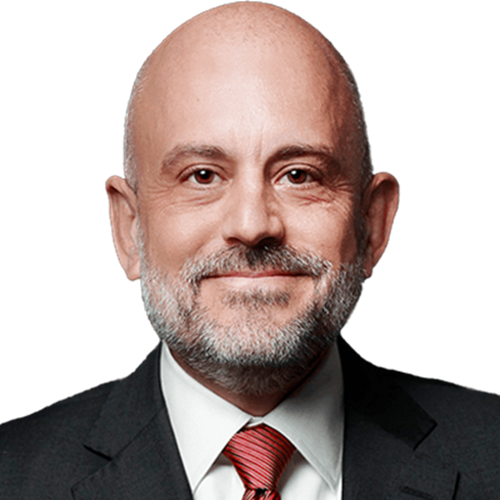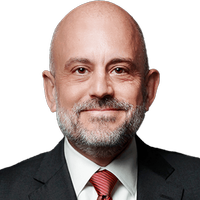How to Measure the Health of Your Retirement Plan
These five key indicators can help you make decisions based on the overall performance of your retirement plan rather than individual variables.

It is well known that business owners use KPIs (key performance indicators) to track and understand the health of their business and marketing efforts. Much like running a business, those planning for retirement should consider their retirement KPIs to help measure the health of their financial situation.
For some people, retirement can seem overwhelming, while others can sometimes oversimplify the process. Regardless of which camp you fall into, it is a good idea to know what information to pay attention to and understand how to prioritize it.
In my experience, people often make the mistake of substituting investment performance for more meaningful key performance indicators (KPIs). Yes, performance is helpful, but it actually has little to do with the overall health of your financial plan, because it is often an uncontrollable variable.
From just $107.88 $24.99 for Kiplinger Personal Finance
Become a smarter, better informed investor. Subscribe from just $107.88 $24.99, plus get up to 4 Special Issues

Sign up for Kiplinger’s Free Newsletters
Profit and prosper with the best of expert advice on investing, taxes, retirement, personal finance and more - straight to your e-mail.
Profit and prosper with the best of expert advice - straight to your e-mail.
What I find is people often view their finances in silos — such as their investments — and tend to make standalone decisions about what to do while leaving out other important variables concerning their situation, which can result in having gaps in their retirement plan design.
For instance, the stock market can move the value of a portfolio negative, but that doesn’t always mean the portfolio or financial plan needs to change. On the other hand, the stock market can be performing very well, but your financial plan may need to be adjusted.
That is why knowing what KPIs to use and how to use them can help measure the health of your overall financial situation, not just track portfolio performance.
So, what is a KPI?
A KPI is simply a collection of data points that helps provide a consistent method for measuring and monitoring the health of your retirement plan. Companies use KPIs to measure such things as their marketing and hiring initiatives to help them understand the results of their efforts.
When using KPIs in a retirement plan, the data points may differ from a business, but they are just as important — if not more important considering what’s at stake.
In my experience, there are five key data points needed to measure the effectiveness of a retirement plan:
1. Passive income
Income is an obvious component and the central theme of any retirement plan but after examining thousands of portfolios over the years, I find that very few plans actually produce income. In my experience, the reason for this is the misunderstanding of what constitutes income. Income is not growth of a share or unit of a particular investment; it is the income generated from the share or unit of an investment.
There is a difference, and passive income is one of the five KPIs that must be measured in order to understand the level of income you can expect from your assets.
If there is a retirement income gap of $5,000 each month, the goal of the retirement plan is to not simply cash out investments each month or spend down savings to meet the goal. It is to create passive income sources that can consistently provide the cash flow.
Missing this point can be catastrophic to the longevity of a retirement plan.
2. Effective tax rate
Taxes are part of life, but there are strategies to help minimize the impact the liabilities have on your cash flow. To understand the impact of taxes, you need to first understand that our income tax rates here in the USA are progressive — the more you make, the higher the marginal rate is on portions of your income.
Marginal rates have their place when filing a return or making decisions about asset positioning, but marginal rates are not one of the KPIs we track. We focus primarily on the effective tax rate, which is a single rate calculated using total tax paid and gross income. This percentage gives us a better overall understanding of the impact taxes have on retirement income.
For instance, if the retirement income gap is $5,000 each month and the effective tax rate is 30%, we can determine the additional amount of income required to cover the tax liabilities.
It also helps to understand that the more tax mitigation techniques you incorporate into a retirement plan, the less pressure there is on your assets to have to generate additional income just to pay taxes.
3. Cash flow ratio
The life blood of any financial plan is cash flow, but what I find is that many people have a difficult time defining what this means. Some people think of cash flow as the amount of net income they have coming in, while others think about it in terms of their total monthly expenses. These interpretations of cash flow often exclude such things as taxes, retirement savings and health insurance, which leaves gaps in understanding the big picture.
The problem with this net approach is that you cannot solve a problem you cannot see or understand, and therefore, you cannot effectively manage cash flow if data is missing.
It is also important to know the ratio of income to bank payments, taxes, savings, insurance, as well as fixed and variable expenses.
And the ratio of earned income vs passive income, along with the number of different income sources you rely upon to fund your lifestyle.
4. Banking capacity
When thinking about your asset allocation, there is often the out-of-the-box structure where assets are divided between investments and bank accounts. The idea is that people want to have money invested to grow and want safe money stashed away in case of an emergency. But this approach oversimplifies a more complex situation and overlooks the realities of life and how people use and spend money.
There are many factors to consider outside of growing assets and covering emergencies, big-ticket purchases and other family needs. When speaking with highly successful people, I often hear them reference having a family bank, and when they say this, they are most often referring to a specially designed life insurance contract, or what we call BUILD Banking™.
A specially designed contract enables a family to have banking capabilities within their own financial ecosystem without relying on actual banks and without interrupting the growth of the contract. This is one of the pieces I find missing when reviewing many financial plans and is something that can easily be incorporated when working with the right team of advisers.
Knowing your banking capacity is a KPI that has proven in my experience to be an anchor to the overall health of your retirement plan.
5. Horizontal asset allocation
When it comes to asset allocation, there really needs to be an understanding of the reasoning behind diversification.
I suspect, based on the thousands of conversations I have with people, that when you think about diversification, you envision a vertical landscape of public market investments such as stocks, bonds, mutual funds.
The mistake people often make is thinking if they have a variety of stocks, bonds, ETFs or mutual funds, that they have their assets diversified, but when it comes to retirement, this may not be the ideal approach. Adding more of the same thing to your portfolio doesn’t mitigate the exposure to the risk you’re trying to diversify away from.
I am not a gardener and know very little about plants, but I do appreciate a well-designed landscape. The variety of colors, sizes and types of plants make the landscape pleasing to the eye. A good arborist knows what plants to plant where to make the garden attractive, but they also know how to use plants to minimize disease, manage growth and keep the bugs away.
Much like a physical garden, the approach we use for asset allocation is similar to help manage growth, produce income, minimize risk and mitigate taxes. Adding things such as real estate, businesses, private equity, life insurance or annuities can provide characteristics and other elements of stability to help support a retirement plan.
Conclusion
The biggest challenge for tracking these KPIs is having the know-how and the technology to pull this data together and make sense of it.
Most financial planning software available to the public and even for financial advisers tends to focus in on hypothetical forecasting and Monte Carlo simulations that can be helpful when testing an investment portfolio after the fact, but is not a substitute for the creation of a retirement plan.
To develop a retirement plan, you must first identify the gaps in your existing situation and then begin to work on strategies to help fill the gap. Having a way to measure passive income, tax exposure, cash flow, banking capacity and asset allocation is the first step in knowing where to begin.
Jumping straight into building a portfolio or rushing to rearrange the chairs on the deck is not a recommended approach to such a complicated and important life event. A tool that we use to look at these KPIs synergistically is the GAP Report™. This is a 21-point diagnostic assessment tool that was created to help identify the gaps that exist within your current financial picture and help remove the guesswork for you.
Investing involves risk, including the potential loss of principal. This is intended for informational purposes only. It is not intended to be used as the sole basis for financial decisions, nor should it be construed as advice designed to meet the particular needs of an individual’s situation.
Securities offered only by duly registered individuals through Madison Avenue Securities, LLC. (MAS), Member FINRA &SIPC. Advisory services offered only by duly registered individuals through Skrobonja Wealth Management (SWM), a registered investment advisor. Tax services offered only through Skrobonja Tax Consulting. MAS does not offer Build Banking or tax advice. Skrobonja Financial Group, LLC, Skrobonja Wealth Management, LLC, Skrobonja Insurance Services, LLC, Skrobonja Tax Consulting, and Build Banking are not affiliated with MAS.
Skrobonja Wealth Management, LLC is a registered investment adviser. Advisory services are only offered to clients or prospective clients where Skrobonja Wealth Management, LLC and its representatives are properly licensed or exempt from licensure.
The firm is a registered investment adviser with the state of Missouri, and may only transact business with residents of those states, or residents of other states where otherwise legally permitted subject to exemption or exclusion from registration requirements. Registration with the United States Securities and Exchange Commission or any state securities authority does not imply a certain level of skill or training.
The appearances in Kiplinger were obtained through a PR program. The columnist is not affiliated with, nor endorsed by Kiplinger. Kiplinger did not compensate the columnist in any way.
Related Content
- Financial Freedom in Retirement Is All About Cash Flow
- Longevity: The Retirement Problem No One Is Discussing
- Three Factors to Consider Before Taking Social Security
- How Do You Build Wealth? Seven Critical Steps
- Being Rich in Retirement vs. Being Happy: There’s a Difference
Profit and prosper with the best of Kiplinger's advice on investing, taxes, retirement, personal finance and much more. Delivered daily. Enter your email in the box and click Sign Me Up.

Brian Skrobonja is a Chartered Financial Consultant (ChFC®) and Certified Private Wealth Advisor (CPWA®), as well as an author, blogger, podcaster and speaker. He is the founder and president of a St. Louis, Mo.-based wealth management firm. His goal is to help his audience discover the root of their beliefs about money and challenge them to think differently to reach their goals. Brian is the author of three books, and his Common Sense podcast was named one of the Top 10 podcasts by Forbes. In 2017, 2019, 2020, 2021 and 2022, Brian was awarded Best Wealth Manager. In 2021, he received Best in Business and the Future 50 in 2018 from St. Louis Small Business.
-
 Dow, S&P 500 Rise to New Closing Highs: Stock Market Today
Dow, S&P 500 Rise to New Closing Highs: Stock Market TodayWill President Donald Trump match his Monroe Doctrine gambit with a new Marshall Plan for Venezuela?
-
 States That Tax Social Security Benefits in 2026
States That Tax Social Security Benefits in 2026Retirement Tax Not all retirees who live in states that tax Social Security benefits have to pay state income taxes. Will your benefits be taxed?
-
 QUIZ: What Type Of Retirement Spender Are You?
QUIZ: What Type Of Retirement Spender Are You?Quiz What is your retirement spending style? Find out with this quick quiz.
-
 This Is How Early Retirement Losses Can Dump You Into Financial Quicksand (Plus, Tips to Stay on Solid Ground)
This Is How Early Retirement Losses Can Dump You Into Financial Quicksand (Plus, Tips to Stay on Solid Ground)Sequence of returns — experiencing losses early on — can quickly deplete your savings, highlighting the need for strategies that prioritize income stability.
-
 How an Elder Law Attorney Can Help Protect Your Aging Parents From Financial Mistakes
How an Elder Law Attorney Can Help Protect Your Aging Parents From Financial MistakesIf you are worried about older family members or friends whose financial judgment is raising red flags, help is out there — from an elder law attorney.
-
 Q4 2025 Post-Mortem From an Investment Adviser: A Year of Resilience as Gold Shines and the U.S. Dollar Dives
Q4 2025 Post-Mortem From an Investment Adviser: A Year of Resilience as Gold Shines and the U.S. Dollar DivesFinancial pro Prem Patel shares his take on how markets performed in the fourth quarter of 2025, with an eye toward what investors should keep in mind for 2026.
-
 Is Your Emergency Fund Running Low? Here's How to Bulk It Back Up
Is Your Emergency Fund Running Low? Here's How to Bulk It Back UpIf you're struggling right now, you're not alone. Here's how you can identify financial issues, implement a budget and prioritize rebuilding your emergency fund.
-
 An Expert Guide to How All-Assets Planning Offers a Better Retirement
An Expert Guide to How All-Assets Planning Offers a Better RetirementAn "all-asset" strategy would integrate housing wealth and annuities with traditional investments to generate more income and liquid savings for retirees.
-
 7 Tax Blunders to Avoid in Your First Year of Retirement, From a Seasoned Financial Planner
7 Tax Blunders to Avoid in Your First Year of Retirement, From a Seasoned Financial PlannerA business-as-usual approach to taxes in the first year of retirement can lead to silly trip-ups that erode your nest egg. Here are seven common goofs to avoid.
-
 How to Plan for Social Security in 2026's Changing Landscape, From a Financial Professional
How to Plan for Social Security in 2026's Changing Landscape, From a Financial ProfessionalNot understanding how the upcoming changes in 2026 might affect you could put your financial security in retirement at risk. This is what you need to know.
-
 6 Overlooked Areas That Can Make or Break Your Retirement, From a Retirement Adviser
6 Overlooked Areas That Can Make or Break Your Retirement, From a Retirement AdviserIf you're heading into retirement with scattered and uncertain plans, distilling them into these six areas can ensure you thrive in later life.
